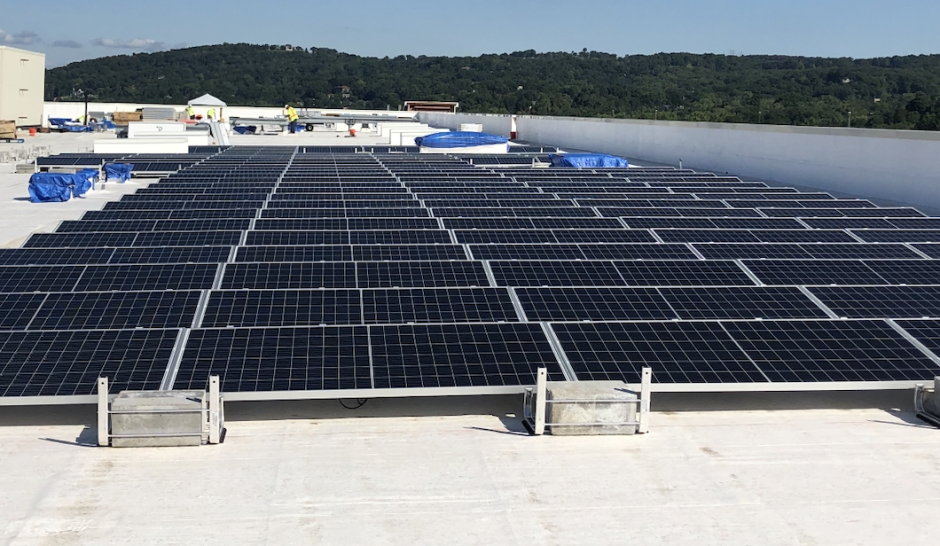Public transit is a sustainable transportation choice, emitting a fraction of the greenhouse gas emissions of single-occupancy vehicles. Every year, the MTA enables the New York City metro area to avoid at least 20 million metric tons of GHG emissions through its services.
Climate benefits of MTA transit
Transportation is the largest single source of emissions in the United States, accounting for 27% of all greenhouse gas emissions.
Thanks to transit use in the New York City metro area, the rate of transportation emissions here is 1.9 metric tons of GHG emissions per capita, compared to the national average of 5.9 metric tons per capita.
Transit use in New York keeps 4.5 million cars off the streets, compared to average American car ownership rates. This allows the New York region to achieve more efficient land use, reduce congestion, and encourage other sustainable transit options such as bicycling and walking.
MTA services are an essential component of the region’s fight against climate change. Continued investment in MTA services will make transit an even more attractive option for riders that also delivers climate benefits as it keeps our region moving.
MTA greenhouse gas emissions target
Even as the MTA provides sustainable transit services, we recognize the increasing urgency of the climate crisis and the need to act.
On April 20, 2023, the MTA committed to reduce the emissions from our own operations by at least 85% by 2040, from a 2015 baseline.
Our strategy is a three-pronged approach, each of which will be integrated into MTA capital plans.
- Update facilities: Reduce fossil fuel use and energy consumption in stations and support facilities.
- Transition fleets: Reduce fossil fuels used for buses, trains, and non-revenue vehicles.
- Use energy efficiently: Optimize energy use through energy management, regenerative energy, and storage.
Updating facilities
MTA facilities, including train yards, maintenance shops, bus depots, and rail stations, include tens of thousands of assets that support MTA services. Many require repairs or replacements.
Some of the things that the MTA is doing to make facilities more climate friendly include:
- Upgrading HVAC and lighting systems to be more energy efficient.
- Identifying opportunities to transition away from fossil fuel heating systems where feasible.
- Investing in solar panel installations on facility rooftops.

Transitioning fleets
MTA fleets include subways, buses, and trains, as well as non-revenue support vehicles. The most significant example of our fleet transition is the Zero Emission Bus Plan. The MTA has committed to transition 100% of its bus fleet to zero-emission models by 2040.
We plan to transition our light-duty non-revenue fleets to 100% zero-emissions by 2035, and medium- and heavy-duty non-revenue fleets by 2040.
We also are reducing emissions from locomotives on Metro-North and Long Island Rail Road, and replacing diesel non-revenue locomotives in the subway with hybrids.
Using energy efficiently
Even as the MTA helps New York avoid burning tons of gasoline every day, we use plenty of electricity ourselves to make the system go. About two-thirds of that is power for subways and trains.
When we upgrade our older systems, we’re not just making transit safer and more reliable, we also are improving energy efficiency by improving the ways that we manage our energy use, especially during peak demand periods.